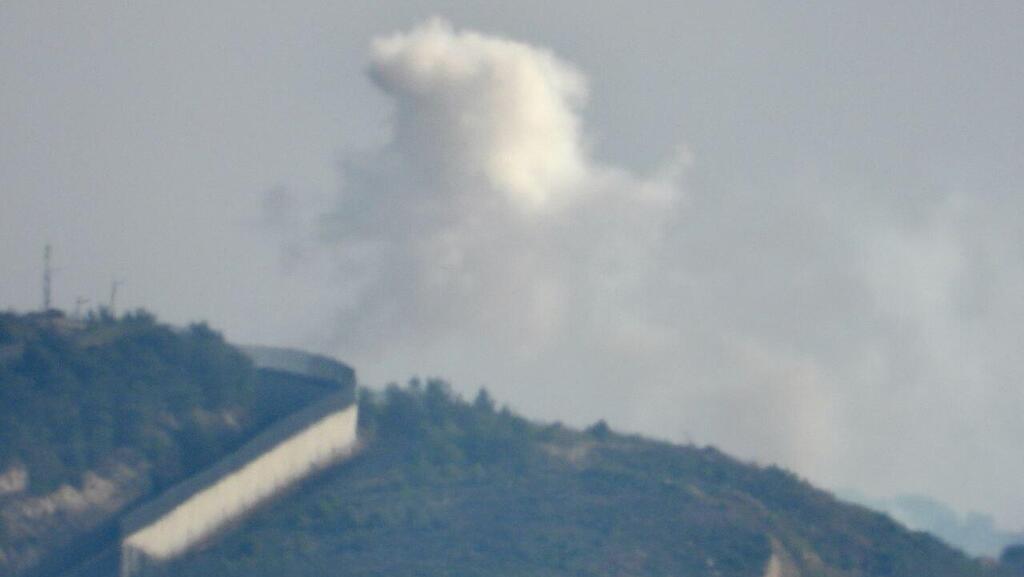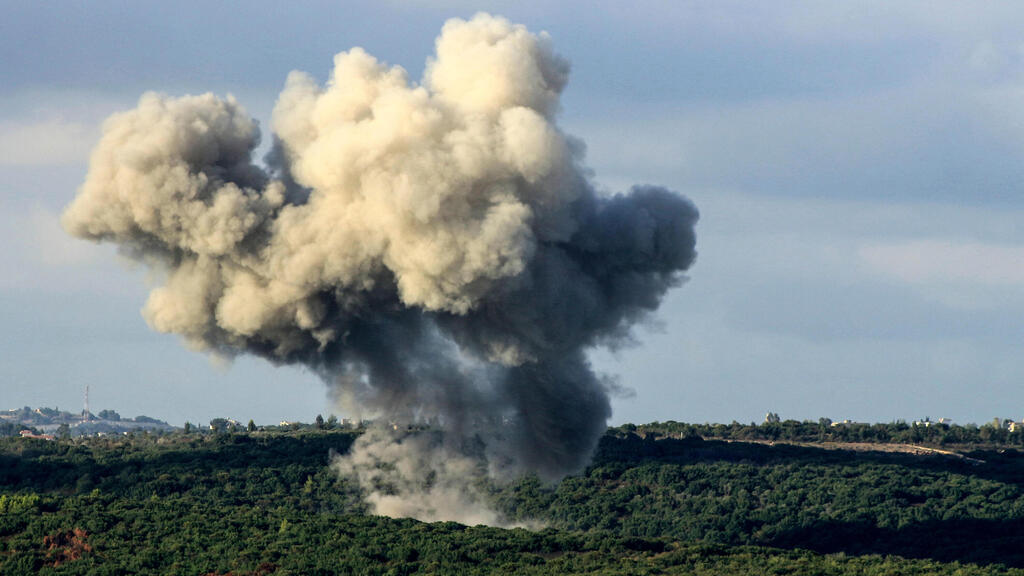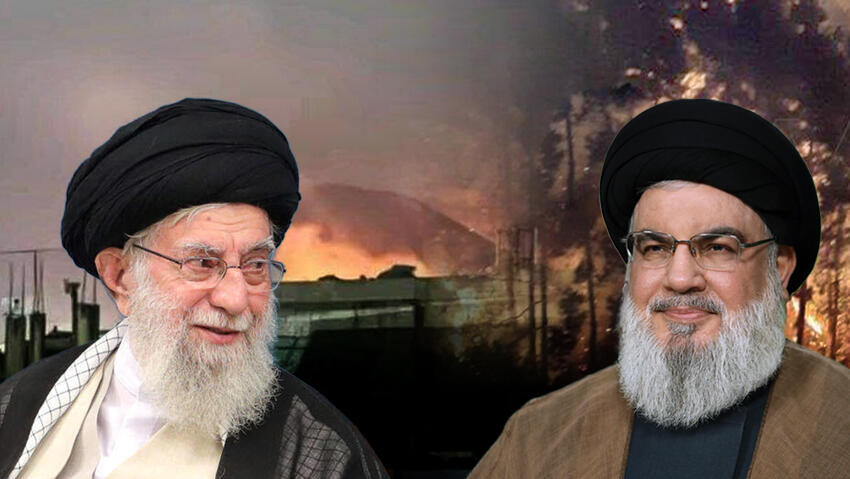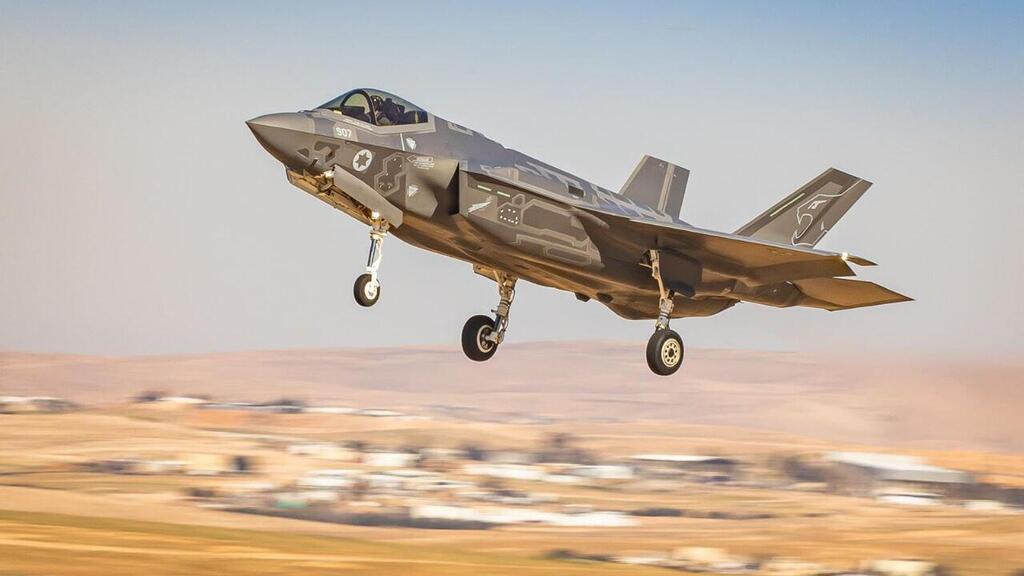Israel is the clear initiator of the escalation in the current stage of war on the northern front. Hezbollah, for now, is only reacting, trying to preserve its prestige while likely formulating a new strategy to serve its goals and those of its patron, Iran.
It seems Iran has already instructed its proxies to intensify their efforts to support Hezbollah, which is why we’ve seen attempts by Iraqi and Syrian militias from the east to launch drones and cruise missiles against Israel.
5 View gallery


Hezbollah leader Hassan Nasrallah, Scene of strike in Beirut
(Photo: Al-Manar TV via REUTERS, REUTERS/Shir Torem, AFP)
Like most of the rockets and missiles launched by Hezbollah, these were intercepted by Israel's multi-layered air defense system, built on interception and aerial patrols that detect and neutralize small drones from a distance.
Overall, these air defense systems performed well overnight on Saturday. However, we can expect the Houthis in Yemen and the Shiite militias in Iraq and Syria to increase their efforts to attack Israel in the coming days, so any sense of complacency in Israel's south or center would be a mistake.
Meanwhile, Hezbollah and its patrons are proceeding very cautiously. This caution likely stems from their — perhaps justified — fear that Israel is attempting to lure them into a response and a full-scale war which would force the U.S. to step in alongside Israel and help achieve its strategic objectives.
'Capacity degradation' and preparing for the next phase
This is a deadly chess game. Since the coordinated explosions of pagers last week, Israel has set operational and strategic objectives that it is gradually implementing. At this stage, the IDF is leveraging the Air Force’s flexibility and operational readiness — resulting from years of preparation — to degrade Hezbollah’s capabilities at an industrial scale.
This is preparation for the next phase, in which the IDF may conduct a ground operation into Lebanon to physically push Hezbollah terrorists away from Israel’s border and demilitarize southern Lebanon and empty it from munitions. The IDF refers to this as a "capacity degradation process."
Netanyahu: No country can accept the wanton rocketing of its cities. We can't either
(Video: GPO)
This process primarily targets rocket launchers, ammunition depots, drone manufacturing and launch pads and the assembly areas of Hezbollah’s Radwan Force near the Israeli border, located in dense brush just a few kilometers or even a few hundred meters away from the frontier.
The IDF intends to achieve two main goals: first, to minimize the damage sustained by northern Israeli communities from Hezbollah’s rocket barrages, which will undoubtedly intensify if and when a ground operation begins; second, to disrupt Hezbollah’s preparations, including those of the Radwan Force, to engage Israeli forces should they enter Lebanon.
A new element in this process has taken shape: in the past, the Air Force claimed it couldn’t hunt down every single launcher among the thousands Hezbollah has dispersed across southern Lebanon and the operational area between Beirut and the Litani River.
Now, however, the Air Force — mainly using fighter jets capable of dropping precision bombs — is targeting individual launchers based on the intelligence available and the expertise gained by the IDF Northern Command, to identify targets and allow the forces to strike with great accuracy.
The secondary explosions seen in footage of the bombings indicate that this tactic is succeeding at a very high and even impressive rate. At the same time, the Air Force is also operating deep inside Lebanon to target the air defense systems supplied to Hezbollah by Iran.
Russian-made SA-6, SA-8, and Pantsir (SA-22) surface-to-air missile systems and Iranian-made S-385 systems among others, restrict the freedom of aerial operations over Lebanon’s territory. The Air Force wants to "clear" the area in advance of the next phases of the campaign or an all-out war.
The Iranian asset Israel has yet to strike
So, why hasn't the IDF targeted Hezbollah's extremely heavy missile and rocket systems, such as the Fateh-110, Imad, Scud 7 and other missiles, primarily located in Lebanon’s Beqaa Valley?
These systems are an Iranian asset, entrusted to Hezbollah by the Iranian Revolutionary Guard Corps (IRGC) to be used in a major campaign against Israel should it attack Iran’s nuclear facilities. Thus, Hezbollah is in no hurry to use them, even when its operatives are being killed in large numbers and its prestige suffers unprecedented blows.
These missiles belong to Iran and not Hezbollah. If the IDF were to strike them, it could trigger a regional war. When the U.S. demands we avoid such a conflict, we must consider this constraint even though pure military logic might suggest that Israel should deliver intense, rapid blows to destroy the missile arsenal threatening Israel’s home front, while pushing Hezbollah’s Radwan Force away from the border.
Hezbollah is currently responding to Israel’s attacks but is limiting itself in both the number of missiles and rockets it fires and its choice of targets. It mainly aims at military and security targets like the Ramat David Air Base and Rafael Advanced Defense Systems’ plants in northern Israel, avoiding launches south of the Haifa-Tiberias line.
The only change in Hezbollah's response is not only an expansion to the south, of the areas under attack but also the heavier types of missiles they have begun to use.
On Saturday night and Sunday morning, we likely saw Fajr-5 rockets, which have a range of 70 km (43 mi) or more, with a warhead weighing about 100 kg (220 lbs.) of explosives. These missiles can cause much more severe damage to buildings and people outside shelters but are inaccurate. Despite Hezbollah limiting itself to targeting the air base and other security assets, the actual damage was seen in civilian residential areas in the Jezreel Valley region.
The number of missiles is significantly smaller as well. In the first salvo, only ten missiles were launched, slightly more in the second, and only by dawn, did the salvos consist of dozens of missiles, most of which weren’t heavy but rather the familiar 122 mm Katyusha rockets ("Grad").
Nasrallah clings to the old equations
The reason for this is that Hezbollah leader Hassan Nasrallah, lacking a new strategy to deal with Israel’s initiated escalation, is still clinging to old equations with which he managed the last 11 months of the war of attrition against northern Israel.
Nasrallah is managing his ammunition supplies considering the Israeli Air Force’s strikes aimed at degrading the group’s capabilities. For now, as long as he hasn’t received approval from Tehran to use the heavy missile arsenal at his disposal, he’s trying to avoid making Israel target these systems which is why he has not fired rockets or missiles south of Haifa and is mainly recalculating his course of action.
Nasrallah is in a real bind because apart from two senior figures — Ali Karaki (commander of the southern front) and Talal Hamiyah (commander of the overseas operations unit) — he doesn’t really have trusted people with whom he can conduct military brainstorming as he’d like.
The blows that the IDF is delivering in Lebanon, which are likely to intensify, might force Nasrallah, perhaps even while the fighting continues, to conduct secret negotiations for a settlement, either through the American channel involving Saudi Arabia and Qatar or through the French channel — or via both.
If he doesn’t move toward a diplomatic settlement as the Americans desire, Israel might ultimately achieve its strategic objectives: pushing Hezbollah and its weapons away from the border and delivering a severe blow to its heavy missile arsenal via military means.
At present, both the settlement track and the intensified campaign track remain open from Israel’s perspective. The ball is now in Nasrallah and Iran’s Supreme Leader Ali Khamenei’s court.








